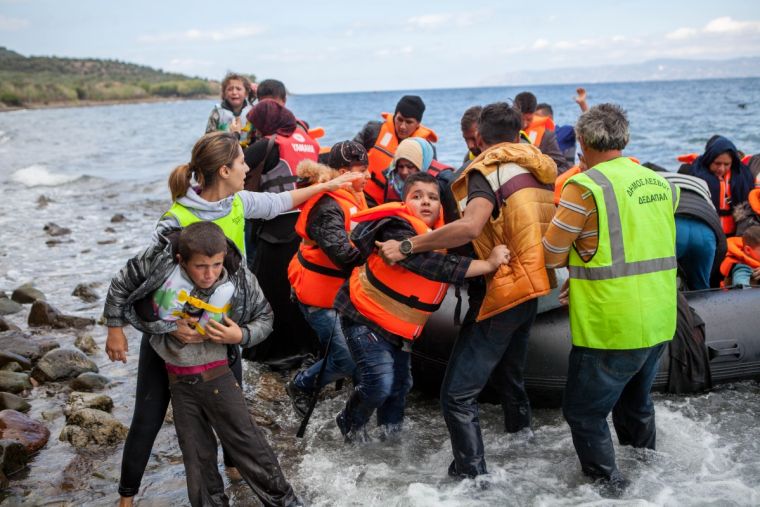A Nativity with Jesus and Mary in a rubber dinghy is true to life, if not to history
When is a Nativity scene not a Nativity scene?
According to an Italian bishop, it's when it depicts the Virgin Mary and the baby Jesus as migrants in an inflatable dinghy.
The scene was devised by the mayor of the town of Castenaso and designed to highlight the dangers faced by migrants as they cross the Mediterranean to safety. Tens of thousands have died since the migration surge began, straining Europe's cohesion to the limit and triggering political crises in many countries.

However, according to RT.com, Bishop Ernesto Vecchi told Italian newspaper Il Resto del Carlino, 'The central nucleus of a nativity scene calls for a child in swaddling clothes to be placed in a manger, and this must be respected.
'The most important part of the crib cannot be represented by a boat. I'm not complaining about it being included in the representation but it should be placed in another part and it should not have hosted the baby Jesus and the Madonna.'
Many readers might sympathise. Isn't this just a case of hijacking a sacred symbol to make a political point? Surely, if there's one thing we can be certain about in the Christmas story, it's the whole manger thing?
Well, up to a point. The traditional interpretation of Luke 2:7 has been quite thoroughly critiqued and scholars regard it as very doubtful that Jesus was born in a stable attached to an inn. The word for 'inn', where there was 'no room', should be translated more as 'guest room', the 'best room' in a typical two-room village house. Instead Jesus was born in the family room, where the people shared their living space with animals and the manger was part of the furniture.
Still, he was laid in a manger, so perhaps the bishop has a point.
But this is, on a certain level, a piece of art. As such it opens up a conversation. What does it say when Jesus and Mary are placed in an inflatable dinghy? Perhaps that his entry into the world was perilous, which is true: all around were hostile forces aimed at snuffing out his challenge to the rich and powerful before he had a chance to grow up. Perhaps that he was on the margins, his family circumstances meaning he was excluded from decent society. Again, this is true: we know his birth was used against him (Mark 6:3, John 8:39). Perhaps that there was no room for him elsewhere – in a different country, or a more reliable boat.
All this is true of the migrants who've risked everything to reach safety in Europe, and true of Jesus too. And if the non-traditional interpretation is accepted – that Jesus was born in a family room, surrounded by love and care rather than being turned away – that works too: those migrants rely absolutely on others to help them.
There's much in this picture to admire and to make us think. But still: the Christian faith is historical, or it's nothing. Is it right, even in the worthiest of causes, to make one of its central events into something it wasn't?
And the truth is, we do this all the time. Those old masters in museums and churches picture Mary as a medieval Italian mama. Nothing about them is 'authentic'. Our own Christmas nativities are the same: shepherds didn't wear tea-towels on their heads, angels don't generally have wings and let's not even start on the wise men/kings/Magi. So the question to ask, if we're wise, is not, 'Did it look like that?' but 'Is that what it meant?'
In the case of Castenaso's nativity the answer to the first is 'No'. But the answer to the second is, 'Yes'. And we should pray for those migrants, who wear the face of Jesus; and for the poor, the endangered and the excluded wherever they are.
Follow Mark Woods on Twitter: @RevMarkWoods











